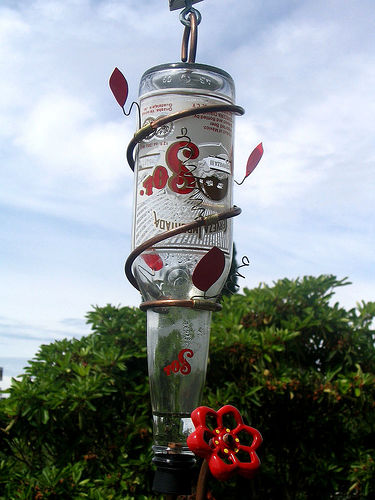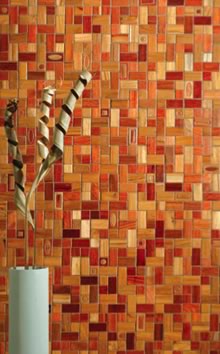My family is SO hard on our stuff. We are the illustrated definition of not deserving nice things, because at any given time we are either muddy, actively painting, hosting five foster kittens from the local animal shelter, hosting thirteen teenagers from our Girl Scout troop, or just, you know, not paying attention to what we’re doing. I’m the one who put a scorch mark in our (to be fair, at least 40-year-old) carpet by… well, I carried a pot of freshly popped popcorn directly from the stovetop and put it on the floor. Apparently that’s very different from carrying a pan of piping hot Pizza Rolls directly from the oven and putting it on the floor. Who knew?
So you might notice that here on CAGW I post a lot of tutorials for washable covers for furniture. I’ve got couch covers, chair covers, tablecloths and cozies of all kinds to attempt to save my stuff from the negligence of me and everyone around me.
And the latest on the list? Cushion covers for my benches! It’s easy to see why the hallway bench needs a cushion cover, because that’s where everybody takes off their muddy boots and clay-covered sneakers and grimy yard Crocs. But once upon a time, I thought that at least the little bench in my walk-in closet would stay nice and pristine just the way I bought it. It turns out, though, that if you’re hanging out on that bench while hiding from your in-laws in that closet, streaming Downton Abbey on your phone, crying, and drinking wine from a Mason jar, well… sometimes things happen.
No matter what cushion you’ve got that needs a washable, reusable cover, I’m not going to judge you. Instead, I’m going to show you how to make that cover from any handy blanket that you’ve got in your stash.
Here’s what you’ll need!
- old blanket, quilt, bedspread, or similar piece of fabric. These thicker fabrics mimic upholstery weight fabric, so do a similar job holding up under wear and keeping spills from soaking through to the cushion below. They also tend to most often mimic the look of upholstery weight fabric, although there is no shame in covering a cushion in a vintage novelty He-Man bedspread, either! I had to work hard to convince myself to use this wool blanket that I thrifted (for $2.50!!!!!!!) instead of a vintage Sesame Street bed cover, and the only reason I decided against the Sesame Street cover is that the wool blanket is sturdier.
- patternmaking and cutting and sewing supplies. You’ll need large-format paper to draw the cushion cover pattern, and all the usual suspects for measuring, cutting, and sewing.
- elastic.
- bias tape (optional). With this wool blanket, I don’t need it, but fabric that’s prone to raveling will require it.
Step 1: Make a cushion cover pattern and use it to cut your fabric.
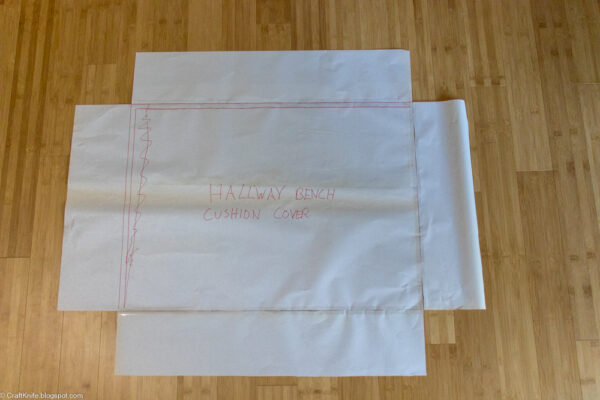
To make your cushion cover pattern, measure your cushion’s length, width, and height.
To the length and width measurement, add .5″, depending on the thickness of your fabric. My wool blanket is moderately thick, but if I was using one of those vintage 1980s bedspreads with lots of batting, I’d probably add more like 1″.
Add a flap to each side of the cover pattern. Each flap should be the height of the cushion plus .5″.
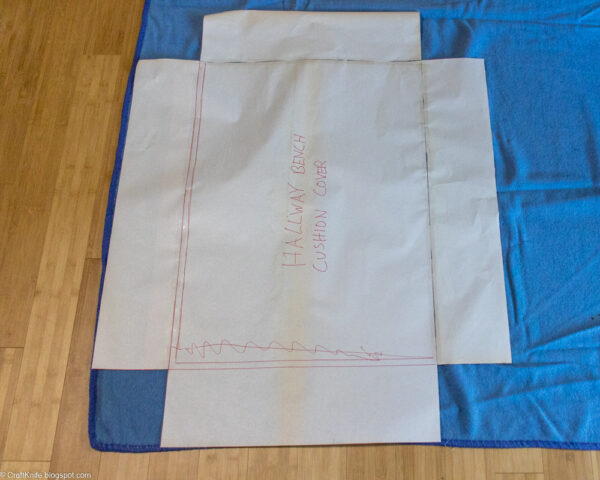
Lay out the pattern on your fabric and cut it out.
Step 2: Sew the cushion cover and add elastic.
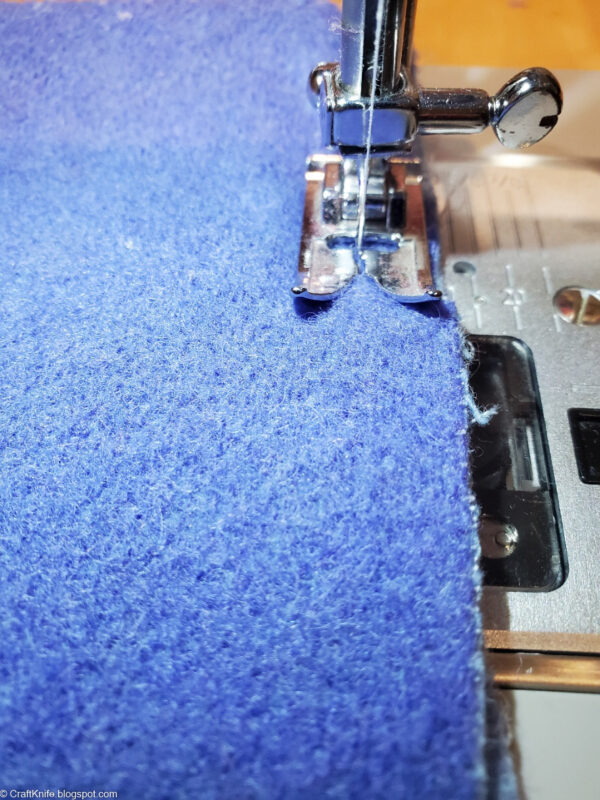
With right sides together, sew the adjacent short sides of each of the flaps to each other, using a .25″ seam allowance. Finger press the seams open.
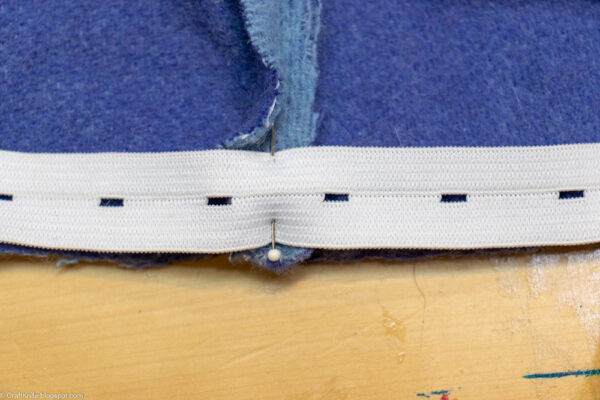
Measure approximately 6″ of elastic for each corner of the cushion cover. Mark the center of each piece of elastic, then pin the center to the corner seam.
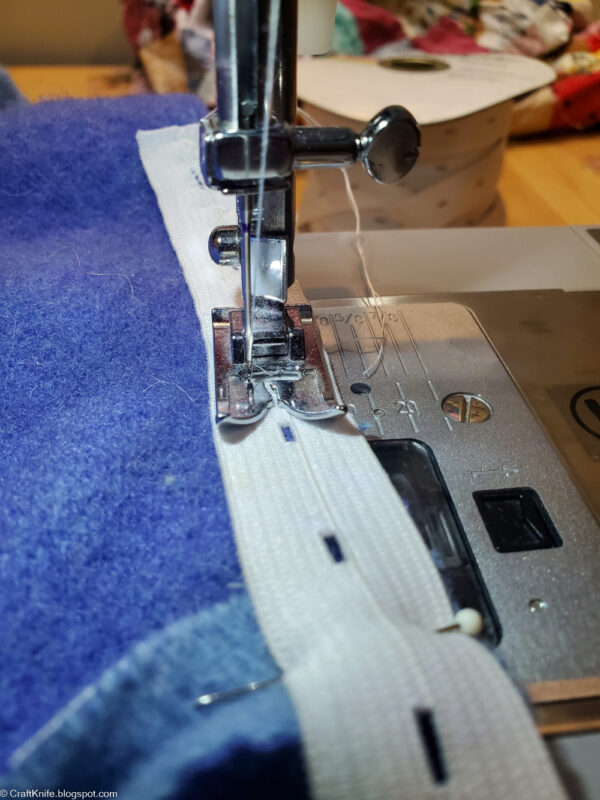
Set your sewing machine to its widest zigzag and longest stitch length. Stretch the elastic, then zigzag it to the raw edge of the cushion cover, keeping it centered on the corner seam. This is exactly the way that you sew a fitted sheet!
Repeat for each corner of the cushion cover.
Step 3 (optional): Add bias tape.
If the raw edges of the cushion cover will tend to fray, encase them in double-fold bias tape.
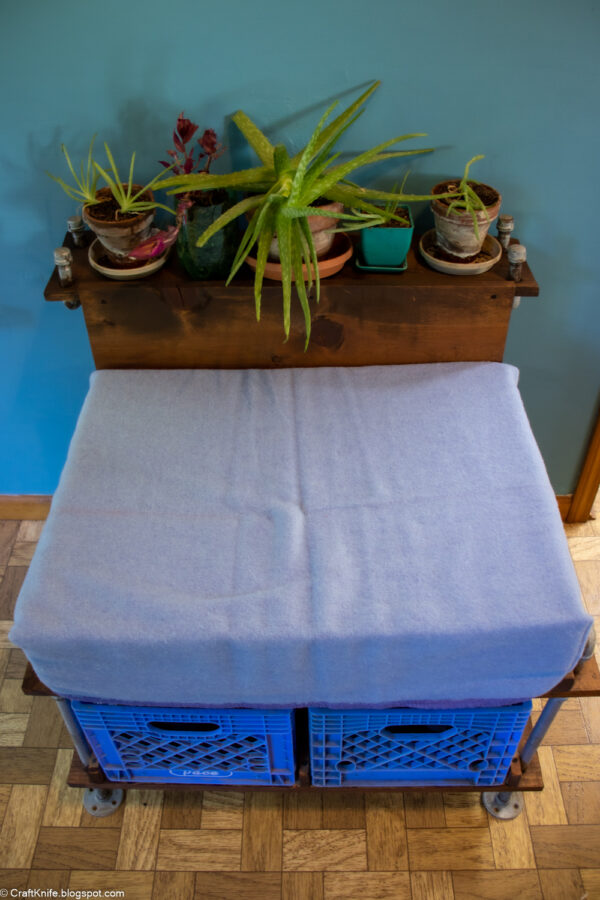
I like to have a spare of these types of home items, and to save space and time, I like to go ahead and put the spare on, as well. So although you can’t see it (mwa-ha-ha!), underneath this wool blanket cushion cover is a second cushion cover, this time sewn from an unfinished vintage quilt top. It’s a lot cuter but a lot less sturdy, which is why it’s only the backup cover.
However, whenever I’m emergency cleaning the house for imminent company, that nicer cover hiding underneath the plain, serviceable cover makes it super easy to whip off the plain cover, toss it in the dirty laundry, and have a cuter cover ready for company. It gets to show off for just as long as it takes to wash my workhorse cushion cover, then that cover goes back on top.
So if you ever come visit me and you find yourself sitting on top of a sweet vintage quilt-covered bench cushion while you take off your filthy barn boots, then you know that you’re VERY special!




